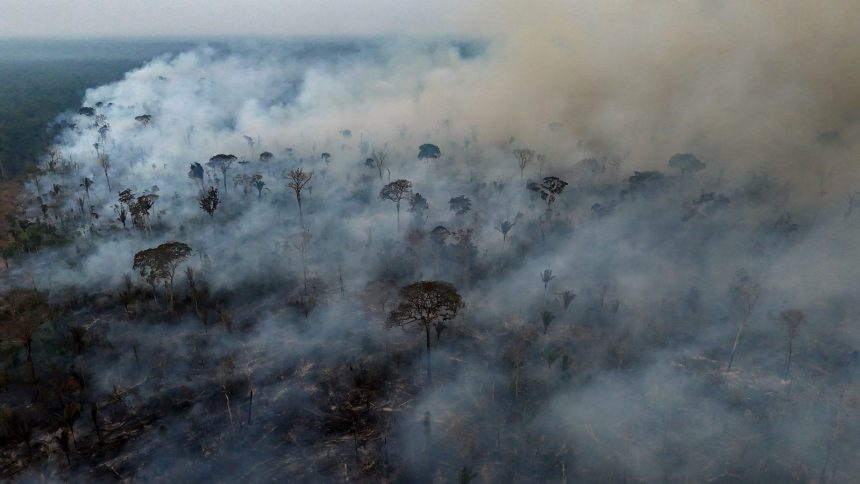South America is currently facing its most severe forest fire season in almost twenty years, with millions of acres burning across multiple countries. The fires are exacerbated by the worst drought on record in the region, a situation foreseen by climate scientists over many years.
Satellite data from Brazil’s space research agency Inpe has identified a record 346,112 fire hotspots in South America this year. The smoke from these fires has spread so extensively that NASA satellites captured the plumes from a million miles away.
In Brazil, nearly 59% of the country is experiencing drought conditions, leading to historic low water levels in Amazon basin rivers. Key Brazilian ecosystems like the Amazon, the Cerrado, and the Pantanal wetlands are suffering from drought and wildfires.
Experts warn that the ongoing fires are a result of intentional fires spiraling out of control, compounded by the dry conditions caused by the El Nino weather pattern and exacerbated by climate change. The consequences align closely with long-standing climate predictions.
Scientists highlight that a warming planet is now a bigger influence than El Nino on the prevailing drought conditions. Climate models project that droughts in the region will intensify, lengthen, and increase in frequency by the end of the century.
Deforestation plays a significant role in exacerbating forest fires, particularly in the Amazon, which acts as a vital carbon sink. Brazilian President Luiz Inácio Lula da Silva expressed concern over the worsening situation during a recent visit to Amazonas.
The Amazon fires underscore the urgency of addressing climate change and preserving vital ecosystems. The impact on biodiversity, freshwater sources, and the environment is immense, highlighting the need for immediate action on a global scale.






